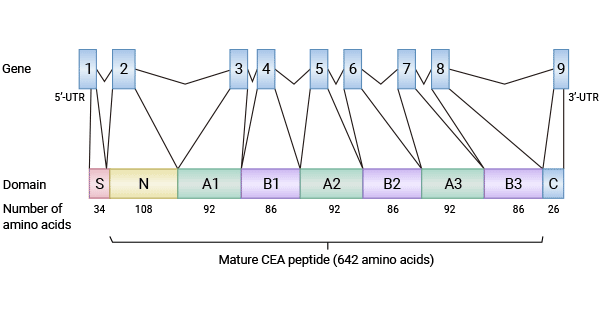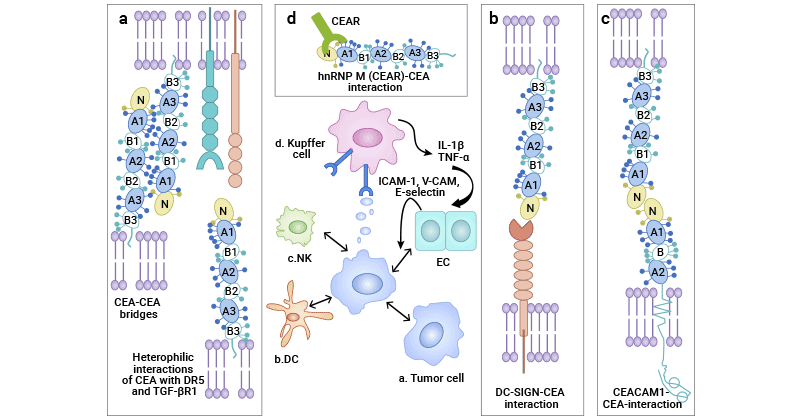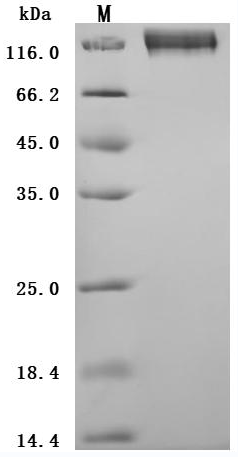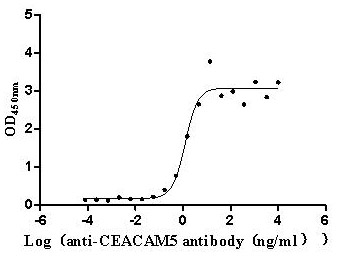[1] Zhou, Xile. Near-infrared fluorescent imaging of pancreatic cancer in mice using a novel antibody to CEACAM5. Diss. Dissertation, Kiel, Christian-Albrechts-Universität zu Kiel, 2021, 2021.
[2] Grunnet, M., and J. B. Sorensen. "Carcinoembryonic antigen (CEA) as tumor marker in lung cancer." Lung cancer 76.2 (2012): 138-143.
[3] Hammarström, Sten. "The carcinoembryonic antigen (CEA) family: structures, suggested functions and expression in normal and malignant tissues." Seminars in cancer biology. Vol. 9. No. 2. Academic Press, 1999.
[4] The Atlas of Genetics and Cytogenetics in Oncology and Haematology “https://atlasgeneticsoncology.org/gene/624/alpg-(alkaline-phosphatase-germ-cell)”.
[5] Blumenthal, Rosalyn D., et al. "Expression patterns of CEACAM5 and CEACAM6 in primary and metastatic cancers." BMC cancer 7 (2007): 1-15.
[6] Beauchemin, Nicole, and Azadeh Arabzadeh. "Carcinoembryonic antigen-related cell adhesion molecules (CEACAMs) in cancer progression and metastasis." Cancer and Metastasis Reviews 32 (2013): 643-671.
[7] Wan, Wen, et al. "Platelet Carcinoembryonic Antigen Cell Adhesion Molecule 5 (CEACAM5) as a Possible Novel Diagnostic Tool for Evaluation of Acute Coronary Syndrome." Medical Science Monitor: International Medical Journal of Experimental and Clinical Research 25 (2019): 9864.
[8] Xiao, Yitai, et al. "Identification of a CEACAM5 targeted nanobody for positron emission tomography imaging and near-infrared fluorescence imaging of colorectal cancer." European Journal of Nuclear Medicine and Molecular Imaging (2023): 1-14.
[9] Mohapatra, Shyam S., et al. "Precision medicine for CRC patients in the veteran population: state-of-the-art, challenges and research directions." Digestive diseases and sciences 63 (2018): 1123-1138.
[10] Moon, Seong Won, et al. "Cancer-related SRCAP and TPR mutations in colon cancers." Pathology-Research and Practice 217 (2021): 153292.
[11] Singer, Bernhard B., et al. "Deregulation of the CEACAM expression pattern causes undifferentiated cell growth in human lung adenocarcinoma cells." PloS one 5.1 (2010): e8747.
[12] Zhou, Jinfeng, et al. "Identification of CEACAM5 as a biomarker for prewarning and prognosis in gastric cancer." Journal of Histochemistry & Cytochemistry 63.12 (2015): 922-930.
[13] Wang, Xi-Mei, et al. "KRT19 and CEACAM5 mRNA-marked circulated tumor cells indicate unfavorable prognosis of breast cancer patients." Breast cancer research and treatment 174 (2019): 375-385.
[14] Sai, M. A., and A. N. Feng. "Expression and influence of CEACAM 5 and PCNA in mucinous epidermoid carcinoma of the parotid gland with different clinical pathological features on clinical prognosis." Journal of Hebei Medical University 41.4 (2020): 440.
[15] Govindan, Serengulam V., et al. "CEACAM5-targeted therapy of human colonic and pancreatic cancer xenografts with potent labetuzumab-SN-38 immunoconjugates." Clinical Cancer Research 15.19 (2009): 6052-6061.
[16] Zhang, Xinwen, et al. "CEACAM5 stimulates the progression of non-small-cell lung cancer by promoting cell proliferation and migration." Journal of International Medical Research 48.9 (2020): 0300060520959478.
[17] Baek, Du-San, et al. "A highly-specific fully-human antibody and CAR-T cells targeting CD66e/CEACAM5 are cytotoxic for CD66e-expressing cancer cells in vitro and in vivo." Cancer Letters 525 (2022): 97-107.
[18] Igami, Ko, et al. "Extracellular vesicles expressing CEACAM proteins in the urine of bladder cancer patients." Cancer Science 113.9 (2022): 3120-3133.
[19] Yan, Jie-ke, et al. "CEACAM5 is correlated with Angio/Lymphangiogenesis of Prostatic Lesions." Central European Journal of Medicine 9 (2014): 264-271.
[20] DeLucia, Diana C., et al. "Regulation of CEACAM5 and Therapeutic Efficacy of an Anti-CEACAM5–SN38 Antibody–drug Conjugate in Neuroendocrine Prostate Cancer." Clinical Cancer Research 27.3 (2021): 759-774.








Comments
Leave a Comment